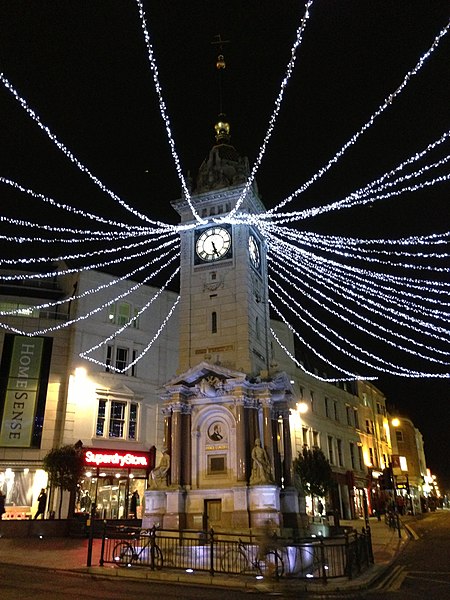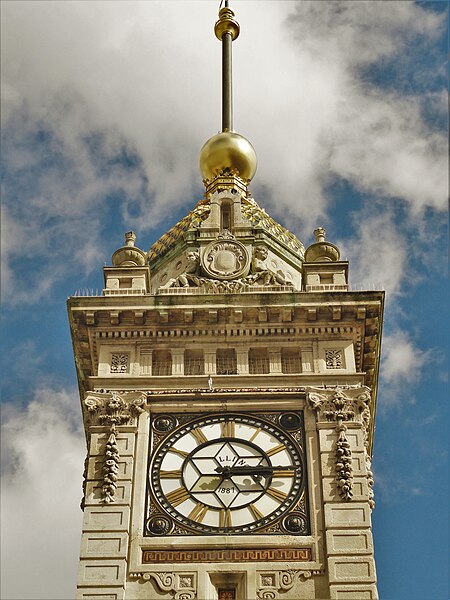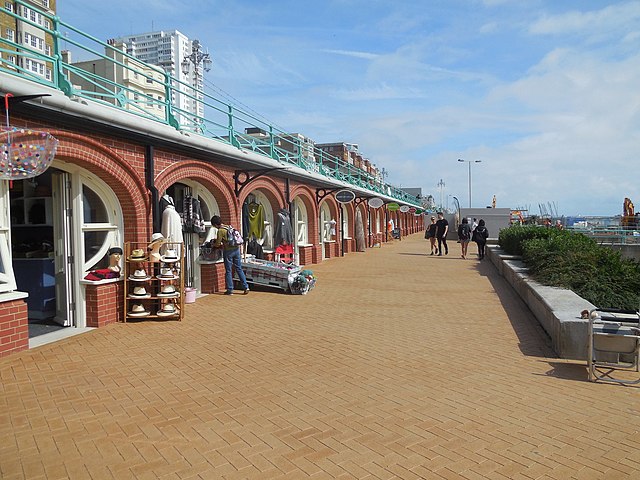The Clock Tower is a free-standing clock tower in the centre of Brighton, part of the English city of Brighton and Hove. Built in 1888 in commemoration of the Golden Jubilee of Queen Victoria, the distinctive structure included innovative structural features and became a landmark in the popular and fashionable seaside resort. The city's residents "retain a nostalgic affection" for it, even though opinion is sharply divided as to the tower's architectural merit. English Heritage has listed the clock tower at Grade II for its architectural and historical importance.
The Clock Tower, lit up for the festive season.
Close-up view of the Jubilee Clock Tower with time ball in its lowest position
Portrait of Albert, Prince Consort
Portrait of Albert Edward, Prince of Wales, later King Edward VII
Brighton is a seaside resort and one of the two main areas of the city of Brighton and Hove in the county of East Sussex, England. It is located 47 miles (76 km) south of London.
Archaeological evidence of settlement in the area dates back to the Bronze Age, Roman and Anglo-Saxon periods. The ancient settlement of "Brighthelmstone" was documented in the Domesday Book (1086). The town's importance grew in the Middle Ages as the Old Town developed, but it languished in the early modern period, affected by foreign attacks, storms, a suffering economy and a declining population. Brighton began to attract more visitors following improved road transport to London and becoming a boarding point for boats travelling to France. The town also developed in popularity as a health resort for sea bathing as a purported cure for illnesses.
Image: Palace Pier, Brighton (NHLE Code 1381700) (September 2018)
Image: Brighton royal pavilion Qmin
Image: Fountain at Brighton Marina geograph.org.uk 3090979
Image: Brighton Creative Retail Quarter geograph.org.uk 4141442








